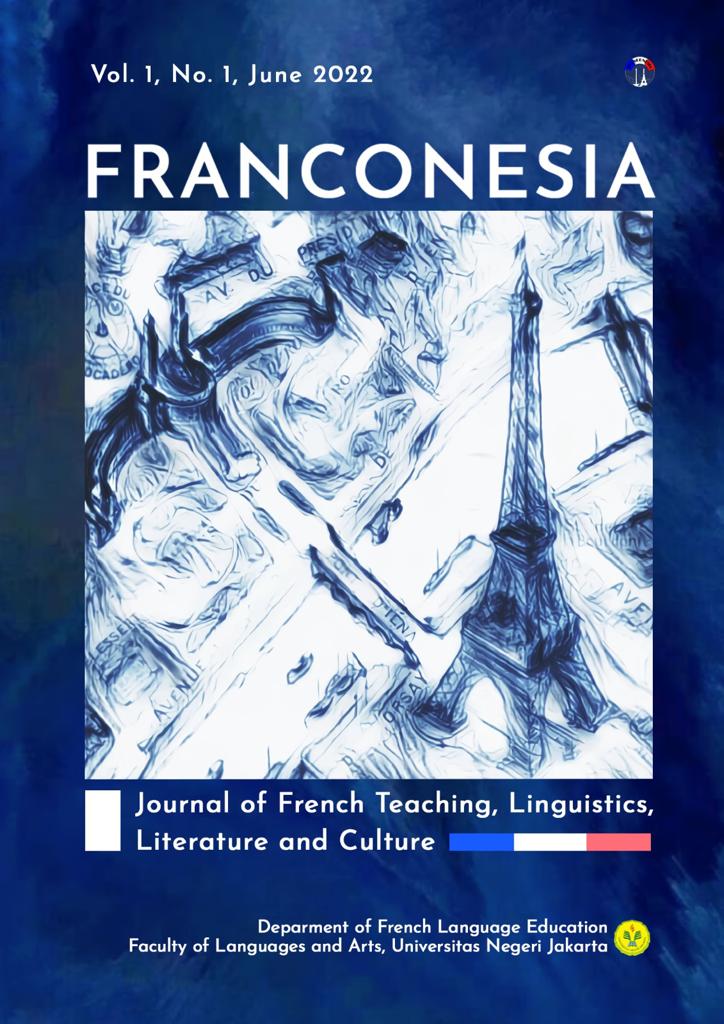Penggunaan les connecteurs argumentatifs dalam debat pada kanal Youtube Touche pas à mon poste
DOI:
https://doi.org/10.21009/franconesia.11.1Keywords:
linguistics, le connecteur, les connecteurs argumentatifs, debateAbstract
This study aims to describe the types of les connecteurs argumentatifs in the debate entitled The Place of Islam in the Republic: Marine Le Pen facing Jean Messiha on the Touche Pas à Mon Poste Youtube Channel based on its use in the context of the statement in the debate. The types of les connecteurs argumentatifs are based on the theory of les connecteurs argumentatifs from Riegel (2009) which include; (1) opposition-concession, (2) explanation and justification, (3) complement, and (4) conclusion. This study uses a descriptive approach. The data analysis method used refers to the qualitative data analysis technique according to Miles and Huberman. Data analysis was carried out on statements in the debate that used les connecteurs argumentatifs and described the function of these conjunctions according to the context of the sentence. The results of this study indicate that there are 24 les connecteurs argumentatifs contained in the debate. From the 24 data found, 6 data were obtained for opposition-concession, 7 data for explanation and justification, 5 complementary data and 6 data for conclusions used by the speaker in statement. Based on the research that has been done, it can be said that the statement in the debate entitled The Place of Islam in the Republic: Marine Le Pen facing Jean Messiha on the Touche Pas à Mon Poste Youtube Channel contains les connecteurs argumentatifs.Downloads
Published
2022-06-30
How to Cite
Ali, M. R., Savitri, D., & Ismail, S. (2022). Penggunaan les connecteurs argumentatifs dalam debat pada kanal Youtube Touche pas à mon poste. Franconesia, 1(1), 1–12. https://doi.org/10.21009/franconesia.11.1






